QuestionChris, we lost all the fish. Pretty sure it is ick, white spots all over the bodies.
Steps I've taken.
1) Clean tank and platic plants with a mild mixture of bleach and water.
2) Rinsed everything 3 times
3) replaced rocks with new rocks
4) installed water heater
5) purchased larger filter / pump
6) new water add
7) added "Stability" water treatment
We are planning to add two fish to the tank.
1 Molley and 1 Red Platy
I want to do this right and get the right mix of colorful active friendly fish my daughter can enjoy. I've made the mistake of letting her pick the fish, I'll be giving more direction.
What do you think of the plan and the fish selection? Any other fish that will play nice or just a couple more of the same?
Thank you again!
Larry
-------------------------
Followup To
Question -
10 Gal Tank
Running for 2 weeks before fish and 2 weeks after fish. Prior to that Six months.
Carbon filter (pump not gravel filter)
No water chemistry info.
No water heater, Temp is 76.
2 Bala Sharks
8 Neon Tetra
They all have ick.
Two months ago we lost all our gold fish to ick. Cleaned tank completely, gravel, caves etc. and now ick is back.
We also have what looks like an oily scum on the surface of the water.
This is for my 9 year old daughter, who is devastated that her fish are sick and dying again.
How do we get ick? How do we prevent it?
Thank you!
Answer -
Hi Larry;
Are you sure it is ich? Does it look like little white salt specks? Or is it more like white patches? Let me know as soon as you can.
The main problem is that you have too many fish to start the tank through the break-in period. This means toxins are rising too high for them to survive. A 10 gallon tank should have only one or two small fish for the first 6 to 8 weeks.
Those poor balas really have to go back to the store. They get 12 inches long and will start eating the other fish as they grow. Also, take back all but 2 of the neons and make a 25% water change every day for the next week. This will lower the toxins to a tolerable level without stopping the development of the beneficial bacteria. Cleaning out the whole tank will stop the development of the bacteria and throw it all back to 'square one'. The partial water changes helps the process continue. Here is my article about new tanks so you know what is happening;
**********
New Tank Syndrome or Break-in Period
So you have a new tank and you filled it up, put the filter together, mounted the heater into place and turned on the lights. You have all the plants and decorations where you want them....
You are ready for fish.
But, your filter is not ready for a full tank of fish yet.
The filter is running and moving the water and cleaning out crud, right? Of course!
But a very important part of your filter is the part you can't see. An aquarium filter removes the larger visible stuff, but it also must remove the dissolved fish waste that turns into ammonia in the water. To do this, special bacteria must grow in the filter system and on the particles of gravel in the bottom of your tank. This process occurs even on a limited scale in little fish bowls that have no filter in them.
This is "New-Tank Syndrome" or the "Break-in Period". The entire process takes 6 to 8 weeks to complete because these "nitrifying" bacteria grow quite slowly.
Start off with only one or two hardy fish (no more than 2 total inches of fish) for every ten gallons of water and don't add more until the 6 to 8 weeks has gone by. Hard to be patient, but it is worth it to keep your fish alive and healthy. As a matter of fact, the bacteria cannot develop without fish in the tank. You can let that tank sit forever without fish in it, but as soon as the first fish goes in the process begins. Avoid changing the filter pads during break-in. This removes the bacterial colonies that are essential to a balanced aquarium. You can rinse the filter pad out in a container of aquarium water. This will preserve most of the bacteria colonies while still allowing your filter to flow freely. Even using bacteria additives and water conditioners when you first set up the tank will not make a tank begin the cycle by itself. If there are no fish to provide food (fish waste) for the bacteria, the beneficial bacteria cultures will die and you will have to start the colonies all over again once fish are added to the tank. Once the tank has completed the initial cycle, you can change the filter pads every 4 weeks or so. But for now, just rinse them.
Feed your new fish VERY lightly. Any excess food will cause additional waste your system cannot afford to have right now. If you see food floating around or lying on the plants and gravel after five minutes, too much food is going into the tank. Cut back a little each time you feed until it is ALL gone 5 minutes after you feed them. Feed them once a day.
During this "break-in period" your tank will become cloudy and milky looking. You may have to tolerate this for the entire break-in period but it is only temporary. Changing 25% of the water three times a week until the break-in period is over helps a great deal. Changing water reduces the ammonia and nitrites that rise while the bacteria continues to multiply. If ammonia and/or nitrites become too high, your fish will become stressed and possibly die. Use a good water conditioner when you replace the water and make sure it is the right temperature to avoid shocking your fish.
When the break-in is over after 6 to 8 weeks and there are no nitrites or ammonia present in the water you can slowly add more fish. Add one or two every week until you reach the desired population. This allows the bacteria to adjust to the new population every time before adding more. Monitor the nitrites and ammonia to be sure they don't come up. If they do, make a 25% water change and check them again. Don't add the next fish until the levels are down again.
The safe maximum population for any size tank is one inch of adult fish for every gallon of water in the tank. Do some research to be sure of the fish you are interested in. Even though they are small when you buy them, you have to base your population calculations on full-sized adult fish. Many hobbyists have up to two inches per gallon but this can be risky. If a water quality issue arises or a disease occurs it will spread fast and furious in an over-populated tank. In any case, 25% water changes every week to two weeks are absolutely essential for the health of your fish.
Following these guidelines will help you get your new tank on the right track.
**********
Followups Welcome
At Your Service;
Chris Robbins
Come on over and join us on the freshwater fish forum at About.com to get even more information too;
http://freshaquarium.about.com/od/questionsanswers/a/naavigateforum.htm
My member name is ChrisR62. See You There!
AnswerHi Larry;
Read all the info on new tank syndrome and start with either one platy or one molly and add no more fish for the first 6 to 8 weeks. If they are 1/2 inch or so you can put two. The idea is to start with one inch of fish for ten gallons to get it beginning to cycle. Platies and mollies are schooling fish and have live babies, so you will end up with more of them if you have females. Even if you don't have a male in your tank, the females will have already been bred and can have litters of babies for up to six months afterwards. (Yikes!) I just thought you might want to know so you aren't surprised. ;-)
Other possible tankmates for platies and mollies are neon tetras, cherry barbs, danios, cory cats, white clouds. These are all schooling fish and like to be in threes or more. None of them are livebearers so you don't have to worry about babies. Any eggs laid will be eaten and probably never be seen. Remember the population rules listed in the article on new tanks and you will be in good shape.
Have Fun!
Followups Welcome
At Your Service;
Chris Robbins

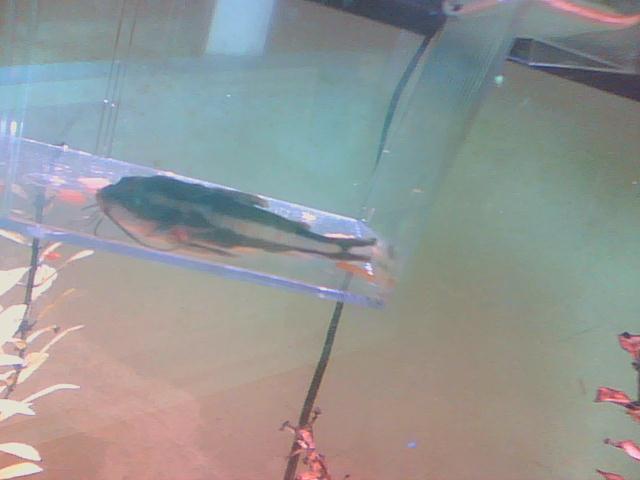 Half-dead fish
Question
Picture of my fish
I have a bottomfeeder whos
Half-dead fish
Question
Picture of my fish
I have a bottomfeeder whos
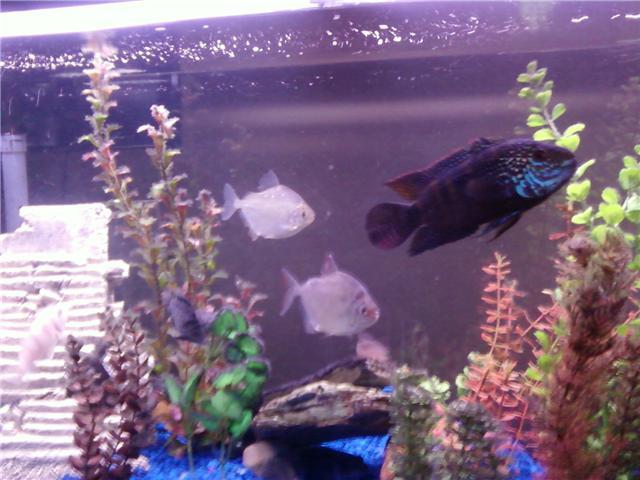 cichlid wont eat
Question
my fish
i have a large jack dempsy cichlid may
cichlid wont eat
Question
my fish
i have a large jack dempsy cichlid may
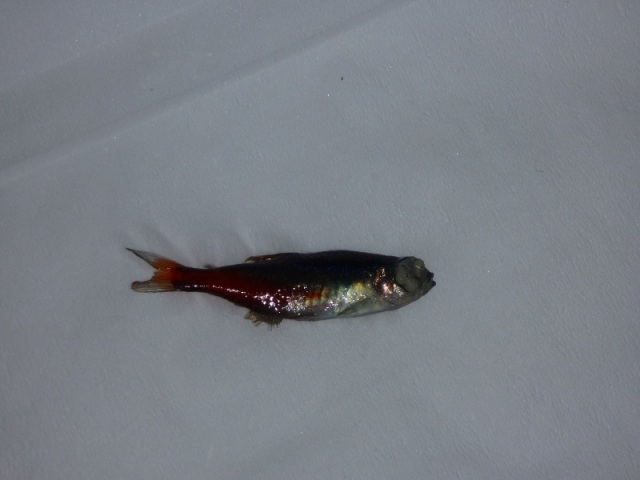 Neon tetras getting sick.
Question
tetra
Hi there,
Ive wanted to ask this questio
Neon tetras getting sick.
Question
tetra
Hi there,
Ive wanted to ask this questio
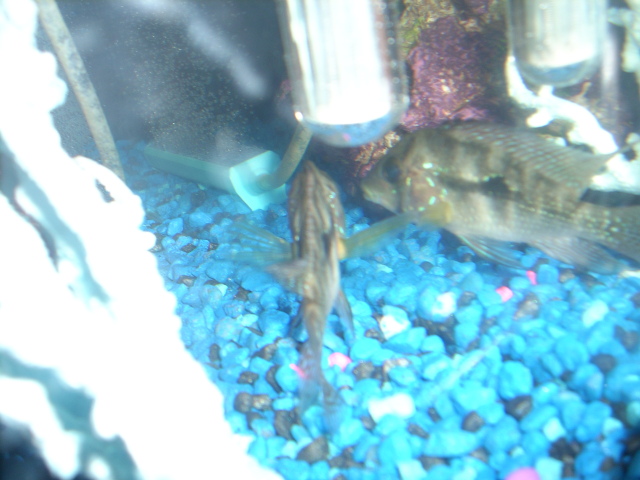 my south american cichlid
Questionmale Cichlid
QUESTION: Hi there I really
my south american cichlid
Questionmale Cichlid
QUESTION: Hi there I really
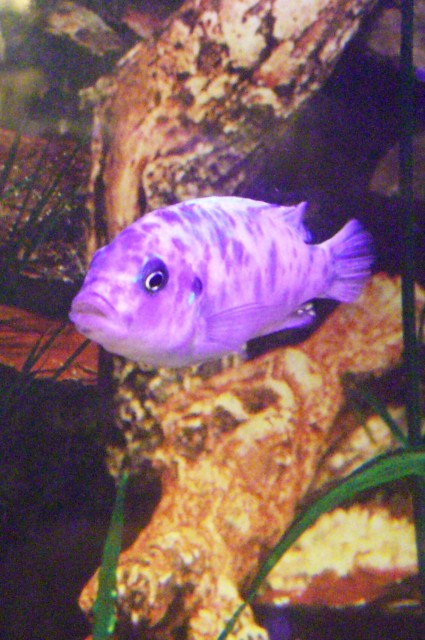 Purple Cichlids
Question
Purple C
I have found a picture of a purple ci
Purple Cichlids
Question
Purple C
I have found a picture of a purple ci